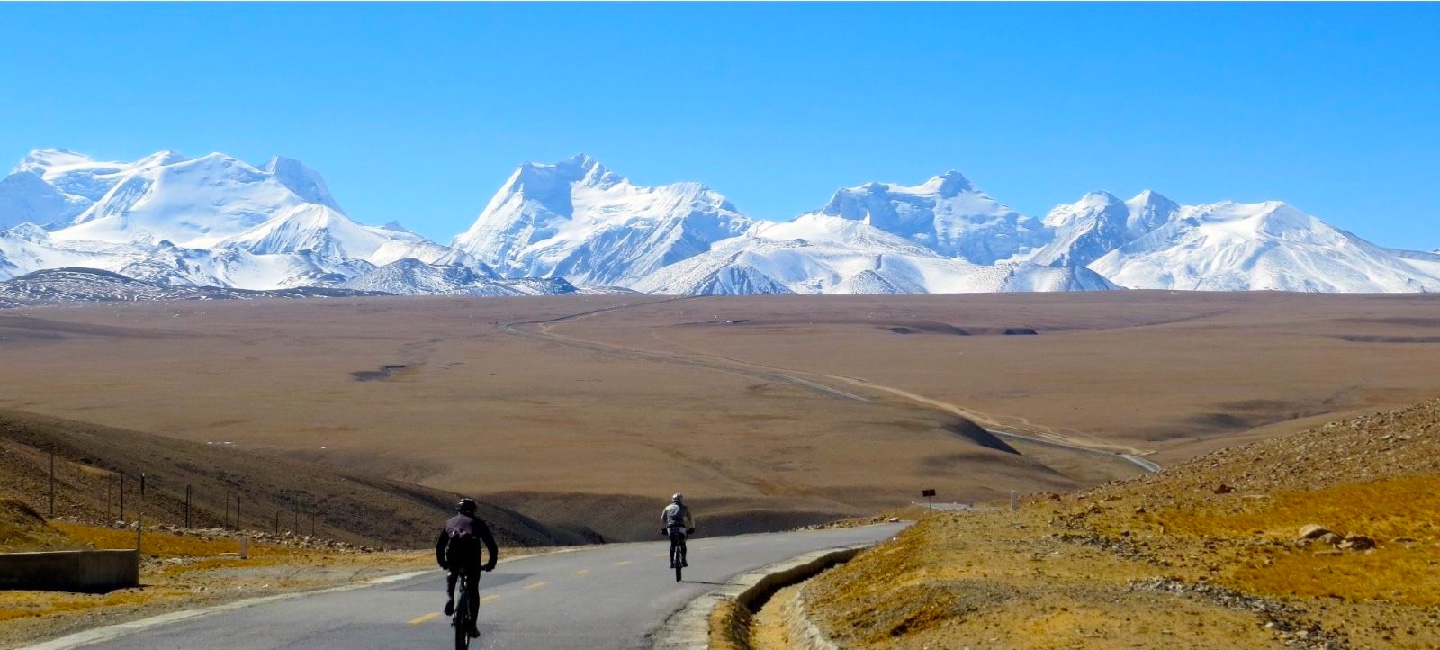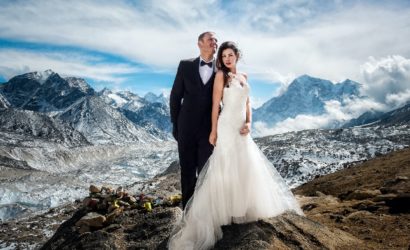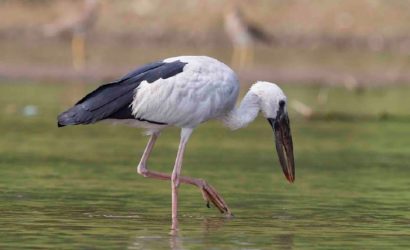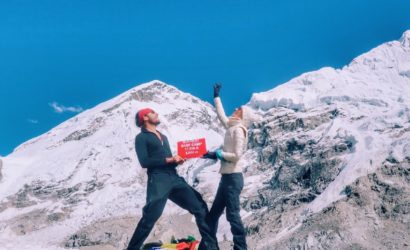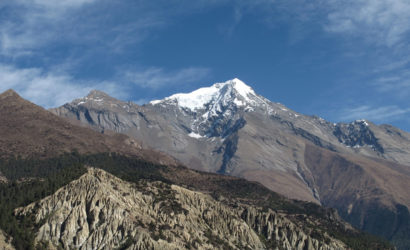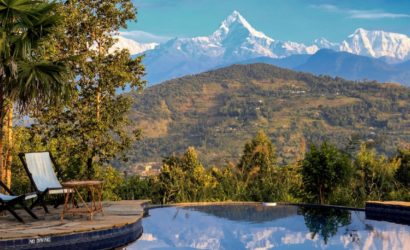Lhasa to Kathmandu Biking Tour is an ultimate mountain bike ride across the “Roof of the World” covering more than 1,100 km, probably the longest bike ride in the world. This adventurous journey crosses six high mountains over 5,000 m, giving the ultimate challenge and fulfilling the adrenaline desire of adventure enthusiasts.
Tibet protected by the great Himalayan chain to the south and west, and by the even more inhospitable mountains to the north and east, has haunted the ambition of explorers for centuries.
The allure is as high as the altitude, and for the adventurous cyclist this land of rugged beauty, vast landscapes, brilliant skies and glittering peaks offers one of the ultimate biking challenges.
After some essential time acclimatizing around Kathmandu and Lhasa, our route takes us across high altitude desert, over awesome mountain passes, stopping off at Rongbuk Monastery and Everest Base Camp for views of the north face of Everest, before making the 160km, 4600m descent into Nepal and the lush Kathmandu Valley.
In recent years much of the route has been surfaced making it perfect for cycling. Tibet, Lhasa to Kathmandu Biking Tour is a tough trip, but for those who venture to the spectacular beauty of Tibet, the sense of achievement is guaranteed.
Trip Highlights
What’s so unique about the Trans-Himalayan highway? Again, as it crosses the Tibetan plateau, it is the highest road in the world, an average of 4,500 meters above sea level. Second, the route boasts the longest continuous descent in the world, which of course means that if you head in the opposite direction, you will face the longest uphill in the world.
A feeling of isolation and awe-inspiring landscapes is best for mountain bikers. They must also face an onslaught of mountain passes zigzagging and endure a constant battle against breathlessness.
Upon your arrival in the Kathmandu (Nepal) airport after completing your custom formalities Visa,etc. pick up your luggage and look for our airport representative from Himalaya Discovery, who will display your name on the board at the arrival gate.
You will be greeted by our representative and transferred to the hotel by private tourist vehicle. Overnight at hotel in Kathmandu. We will have a full briefing in the evening before your dinner.
The local leader will collect your passports, your return flight ticket and a copy of your insurance to secure the group visa for Tibet.
Free in Kathmandu for sightseeing and pre trip briefing and gear check. Today is free for sightseeing in Kathmandu. You may wish to visit Durbar Square in the heart of the old city where the old Royal Palace, with its intricate woodcarving is located. The whole area is a maze of temples and images. Leading away from the square in all directions are narrow alleys, full of the most amazing variety of shops and stalls.
Some of these landmarks are considered World Heritage Sites including the historic Bhaktapur Durbar Square, the famous ‘Monkey Temple’ Swayambhunath and Buddhists shrine Buddhanath which is one of the largest Stupas in the world.
There will also be a full trip briefing today with gear check. In case you need to hire or buy equipment locally there will be time to do this today. Overnight at hotel in Kathmandu.
An early rise to take the morning flight to Tibet. This is one of the world’s most spectacular flights, with a one hour flight over the incomparable Himalayas – keep your eye out for Everest!
After landing at Gongkar airport we transfer 70km to our hotel in Lhasa’s beautiful Tibetan Quarter. After checking into the hotel, we go for a walk around the Barkhor Square, the spiritual heart of Tibet.
Acclimatisation is very important at this considerable altitude (Lhasa is at 3680m), so for the first few days we make exploratory local rides and cultural visits to become accustomed to the thin air.
Points of interest include: – The dramatic Potala Palace (Winter Palace) and the Norbu Linka (Summer Palace), the palaces of the Dalai Lama, with many temples and rooms to explore. – Sera Monastery, one of Lhasa’s two great Gelugpa monasteries, once housing a population of around 5500 monks, though now it numbers only a couple of hundred.
The Jokhang Temple – the most revered religious structure in Tibet – where the bustle of worshippers creates an atmosphere and spectacle as absorbing as the Temple itself.
Now fully acclimatised, we take to our bikes and cycle out to the Drepung Monastery on the outskirts of Lhasa. The Freedom Highway then leads us away from Lhasa down the Lhasa Valley and to our guesthouse in Chusul. Maximum ride distance is 70km.
Following breakfast, those who feel up to it can tackle the 25km climb up to the pass of Kamba La.
This tough climb will take 3 – 4 hours but the views from the prayer-flag-strewn summit at 4794m are spectacular.
We then descend to the turquoise Yamdrok Lake where we have lunch, before taking the gentle and scenic road around to the small town of Nagatse. Maximum ride 105 km.
Following breakfast, there is the opportunity to tackle the first and (fortunately) ‘lowest’ of the high passes – the 5045m Karol La. This climb will take approximately 3 hours. The subsequent descent is twice as long and descends over 1000m in altitude to Gyantse in the heart of the Yang Chug Valley.
There is plenty to catch the eye here, including the Palcho Monastery and the magnificent Kumbum Stupa – a fantastic tiered structure that is now unique in the Buddhist world. You will also be able to see the beautifully located Gyantse Dzong – where Lt. Col Francis Younghusband made his infamous first stronghold in 1904. Maximum ride distance 100 km.
Today’s ride is a scenic and gentle 94 km across beautiful plains with a dramatic mountain backdrop. After a mid-ride lunch stop, we continue across the plains into Shighatse, Tibet’s second largest city and home to the controversial Panchen Lama, whose home is traditionally at the Tashilunpo Monastery. Maximum ride distance 94km.
Visit the huge Tashilunpo monastery complex. During our time in Shigatse, the necessary permits will be issued for visiting Everest Base Camp.
A gentle start to the day with rolling terrain across the Shigatse Plains. A gradual but long climb then takes us to the double passes of Tra La (4050m) and Tsuo La (4520m). There is then a fantastic descent which flattens out before we arrive at our guesthouse at Lhatse. Maximum ride distance 150kms.
A day to test the legs! We leave Lhatze and ride to the foot of the Gyatso La, before climbing to the summit of the pass at 5248m! This is the highest pass on the Friendship Highway and a steady effort will be needed to conquer it.
The sight of Everest looming into view is the reward for attaining the summit, as we gradually approach the Himalayan chain. Maximum ride distance 85km.
After the initial smooth tarmac from the door of the hotel, we then turn south and head off-road for the next few days! For the very fittest there is another pass – this time the 5200m Pang La – where we feast on the extensive views of the Himalayas. On a clear day, the sheer scale of the mountain views throughout is unequalled in the world!
The descent from the pass is fast and twisty and brings us down in to the Rongbuk Valley and to our overnight stop in Tashi Zom. 90% off-road. Maximum ride distance 62km.
Cycling on a vehicle width jeep trail today in full view of Everest’s North Face, we approach both the mountain itself and the Rongbuk Monastery. Taking lunch in the airy tranquillity here is one of the highlights of the trip.
After lunch, we continue the short distance to our overnight accomodation at the Jarongbuk tented camp. The remainder of the afternoon is free to allow for acclimatisation to the lofty (5200m) altitude.
The stunning views of Everest, visible from our campsite, hopefully make up for the lack of air! 100% off-road. Maximum ride distance 52 kms. See note in accommodation section.
After breakfast, we take to our bikes and head slowly up the gravel jeep trail to Everest Base Camp. The route is only 4 kms, but the stunning views and thin air mean it might well take 90 minutes!
The views from Base Camp are spectacular and offer a 360 degree panorama of the high Himalaya to put your photographic skills to the test!
After enjoying the ambience of Base Camp, we return to our tented accomodation where our cooks will have prepared another amazing lunch! The afternoon is free to relax and enjoy the incredible surroundings. 100% off-road. Maximum ride distance 8 km.
Heading back out of the wide valley, a turn-off takes us over the Nam La pass and along smaller tracks to Tingri, a little town overlooking the sweeping plains.
Tingri is bordered by the mighty Himalayas and we will have distant views of Everest, Cho Oyu, as well as the ruins of buildings destroyed in the 18th century Nepalese invasion of Tibet. 100% off-road. Maximum ride distance 70 km.
We usually drive to the first of the double passes of Lalung La (4950m) before riding down and up to the Shung La (5200m), the last pass in Tibet.
The high-altitude lunch spot here is fantastic with tantalising views of Shishipangma. Lunch is made even more enjoyable for knowing that it is now more than 4000m down to Nepal!
We begin our epic descent by thundering down to Nyalam where we will spend our last night in Tibet. Maximum ride distance 75km.
Not a high pass to be found today!. At Zhangmu we pass through Chinese customs before continuing down to Nepal, crossing the famous Friendship Bridge at Kodari. Please remember to ride on the left in Nepal! From Dolalghat we transfer to Dhulikhel. Maximum ride distance 50km.
Wonderful way to end this trip – a big breakfast at sunrise and the spectacular panorama of the Himalayas.
You will freewheel down through Bhaktapur where you can stop and see some of the town’s famous temples if you wish, before we ride into busy Kathmandu again. Overnight at hotel in Kathmandu.
Today is rest and relax throughout the day. If you get interested to take some gifts from Nepal for friends and relatives, visit to some nearby shops or go out in Thamel for typical Nepalese goods.
In the evening we will have a farewell dinner in a traditional Nepalese restaurant with cultural performances. Overnight at hotel in Kathmandu.
The trip concludes, our airport representative will drop you to the airport for your flight departure from Nepal.

